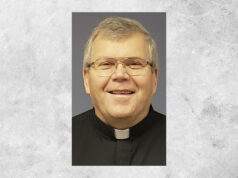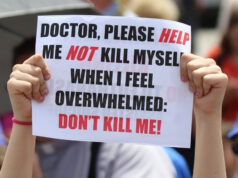
The Diocese of Wilmington, a suffragan see in the Province of Baltimore, was established March 3, 1868, by Pope Pius IX. It comprised all of the State of Delaware, and the nine Maryland and two Virginia counties east of the Chesapeake Bay — Cecil, Kent, Queen Anne, Talbot, Caroline, Dorchester, Wicomico, Somerset and Worcester in Maryland, Accomack and Northampton in Virginia. The latter two counties were returned to the Diocese of Richmond on June 17, 1974, after construction of the Chesapeake Bay Bridge-Tunnel provided for the first time a connection to mainland Virginia.
A new diocese
Concerned over how to provide for ever-increasing numbers of newly arriving Catholic immigrants, the bishops of the United States gathered in Baltimore in October 1866 for the Second
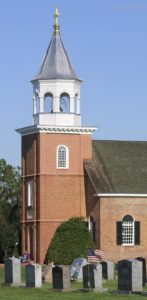
Plenary Council of all the bishops of the country. Among other actions, they petitioned the Holy See to create a new diocese for the geographical area known as the Delmarva Peninsula, where completion of a railroad for its whole length gave new and convenient access by land to the entire area. Its Catholic population had been estimated at 5,000 — 3,000 in four parishes in or near Wilmington, the other 2,000 scattered in small communities along Maryland’s Eastern Shore, where there were only two parishes, each serving a number of distant missions, staffed by Jesuit priests whose predecessors had ministered in the area since shortly after Maryland’s founding in 1634. There were few Catholics elsewhere on the peninsula.
Mass was first celebrated within the present diocese on Kent Island in the Chesapeake Bay as early as 1639. A mid-17th-century Jesuit foundation at Wyetown in Talbot County did not survive Maryland’s vigorous repression of Catholicism after 1689, but later Jesuit churches are still in use to this day— St. Francis Xavier (Old Bohemia), founded in 1704 near present Warwick, Cecil County; St. Joseph (Tuckahoe), at present Cordova, Talbot County, and St. Peter, near Queenstown, Queen Anne’s County, both founded in 1765, and St. Mary Star of the Sea (Tubman Chapel, Meekin’s Neck), near present Golden Hill, Dorchester County, 1767.
St. Mary of the Assumption (Coffee Run) was founded in 1772 near present Hockessin, Delaware, and from it a succession of pastors served both the Wilmington area and nearby Chester and Delaware Counties in Pennsylvania. Among them was the legendary Rev. Patrick Kenny, a diocesan priest who was pastor from 1804 to 1840. Besides Jesuits, other religious communities, both male and female, also labored within what became the Diocese of Wilmington — Capuchin Franciscans, Augustinians, Sulpicians, Redemptorists, and from 1830 to the present, the Daughters of Charity, founded by St. Elizabeth Seton at Emmitsburg, Md.
From early in the nineteenth century the Catholic population was concentrated in the Wilmington area, as successive waves of Catholic immigrants arrived — Irish, French, Caribbean, German, Polish, Italian, and more recently Latin American, Filipino, Korean and Vietnamese. In 1816 Father Kenny laid the cornerstone for the first Catholic church in Wilmington; its foundation and walls are now part of the transept of the Cathedral of St. Peter at Sixth and West Streets.
Thomas Andrew Becker of Richmond, Va., consecrated first Bishop of Wilmington on August 16, 1868, started with limited diocesan resources: eight priests; 18 small churches; an orphanage, academy for girls and parochial school, all operated by the Daughters of Charity at St. Peter, Wilmington; and parish schools at St. Mary, Wilmington, and St. Joseph, Brandywine Banks, conducted by the Sisters of St. Joseph, who were immediately recalled to Philadelphia by Bishop James Wood when the new diocese was established.

During the 18 years Bishop Becker led the Diocese, the number of priests increased three-fold, and he doubled the number of churches, concentrating on rural areas. He obtained the services of the Visitation, Glen Riddle Franciscan, and Dominican sisters. He also brought to the Diocese German-speaking Benedictine priests and sisters to minister to the increasing number of German immigrants.
As the Catholic population rose to 18,000, Bishop Becker founded an orphanage and academy for boys, another academy for girls, and two more parochial schools. His writings, upholding the morality of the early labor movement and urging the establishment of a national Catholic University, were nationally influential. Locally he was forced more than once to use both pen and pulpit in defense of the church and its teachings. On March 26, 1886, he was transferred to Savannah, Georgia.
Period of growth
His successor was Alfred Allen Curtis of Baltimore, a native of the diocese’s Maryland Eastern Shore, who was consecrated second Bishop of Wilmington on November 14, 1886. He set out immediately to liquidate all church indebtedness, especially of the country parishes. To do this he secured legislation in Delaware, Maryland and Virginia allowing all parishes to incorporate and hold property in their own names, rather than in the name of the
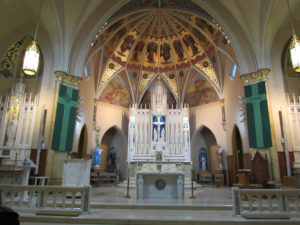
bishop. In 1890 he asked the Benedictines to start St. Hedwig Parish for the Poles who had begun arriving in large numbers, and in 1896 invited the Felician Franciscans to staff its parish school. He brought the Josephite fathers to the diocese to minister to African-Americans, opening St. Joseph Church, a boys’ orphanage, and a parochial school in Wilmington. Later, with assistance from St. Katharine Drexel, the Josephites also opened an industrial school for older youths at Clayton, Delaware.
Under Bishop Curtis, the Benedictine sisters located their motherhouse at Ridgely, Maryland, and opened a school there, later replaced by their ministry to exceptional children. In 1893 the Ursulines took over the girls’ academy that the Visitation sisters had conducted. The Visitandines, with the bishop’s encouragement, established a cloistered monastery, returning to their original purpose and rule, and remained for over a century until relocating in 1993 to Massachusetts. Bishop Curtis resigned for health reasons on June 10, 1896, leaving a well-established diocese: 30 priests, 22 churches and 18 missions serving 25,000 Catholics, 12 seminarians, eight religious communities, three academies, nine parochial schools, three orphanages and a cloistered convent.
Bishop Curtis remained as apostolic administrator of the diocese until the arrival of his successor, John J. Monaghan of Charleston, South Carolina, who was consecrated third Bishop of Wilmington on May 9, 1897. Over the next 28 years Bishop Monaghan established seven new parishes, seven missions and eight new schools. In 1903 the Little Sisters of the Poor opened a home for the aged and the Oblates of St. Francis de Sales opened the Salesianum School in Wilmington, for many years the only secondary school for boys in the diocese. In 1924 Bishop Monaghan asked the Oblates to establish a parish and build St. Anthony Church for the growing Italian population of Wilmington.
Bishop Monaghan welcomed the establishment by Bishop Stephen Soter Ortynski, Byzantine Exarch of Philadelphia, of a parish at Wilmington and a parish and orphanage at Chesapeake City, Md., for the Ukrainian Catholics within the diocese. Bishop Monaghan also founded the St. Francis Hospital, operated by the Sisters of St. Francis of Glen Riddle. Bishop Monaghan resigned for health reasons on July 10, 1925.
He was succeeded by Edmond John FitzMaurice of Philadelphia, who was consecrated fourth Bishop of Wilmington on November 30, 1925. During his 35-year episcopate the Catholic population grew from 34,000 to 85,000. All but one of the 17 new parishes and eight missions he founded were outside the City of Wilmington. He started 19 elementary and nine secondary parish schools, of which four for the first time were outside New Castle County, at Dover, Salisbury, Easton and Rehoboth. Two private high schools were also opened — Archmere, for boys, by the Norbertine canons, and Padua, for girls, by St. Anthony Parish 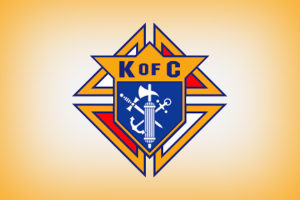 under the Franciscan sisters — and an elementary academy — St. Edmond’s, for boys, by the Brothers of the Holy Cross.
under the Franciscan sisters — and an elementary academy — St. Edmond’s, for boys, by the Brothers of the Holy Cross.
Bishop FitzMaurice encouraged active participation by the laity in the work of the church, anticipating the reforms of Vatican Council II. Among the many activities he encouraged were such conventional structures as Catholic Charities (founded as the Catholic Welfare Guild), Catholic Youth Organization, Society for the Propagation of the Faith, St. Vincent de Paul Society, and Knights of Columbus, as well as innovative ones like the Catholic Interracial Council, Catholic Forum of the Air, Catholic Television Guild, Diocesan Book Forum, Catholic Education Guild, and Young Christian Workers.
On October 24, 1956, Hubert J. Cartwright of Philadelphia was consecrated Coadjutor Bishop of Wilmington, with right of succession to Bishop FitzMaurice, and quickly endeared himself to the people of the diocese, visiting each parish. Sadly, Bishop Cartwright died less than 18 months after his arrival in Wilmington. Michael William Hyle of Baltimore replaced him, and was consecrated Coadjutor Bishop of Wilmington with right of succession on March 6, 1958.
Bishop FitzMaurice retired on March 2, 1960, and Bishop Hyle became fifth Bishop of Wilmington. Most of his short episcopate was devoted to the Second Vatican Council. He attended all of its sessions and immediately began implementing its early reforms. He directed formation of councils in each parish, established The Dialog as a quality diocesan newspaper that quickly achieved national prominence, and was in the forefront of the ecumenical movement. He commissioned special ministries to the prisons and mental hospitals in the diocese, reorganized the Newman Apostolate in all colleges and universities, and opened a Catholic Information Center in downtown Wilmington. To cope with the urban problems common to cities throughout the country, Bishop Hyle established an Office of Inner City Ministry.
After surveying the needs of the diocese, he launched a Diocesan Development Program with a goal of $7,000,000, to which $9,000,000 was pledged, providing for the first diocesan-operated high school, St. Mark’s, a Newman Center at the University of Delaware, and an upgrading of parochial schools. Bishop Hyle’s work was cut short after only seven years by his death on December 26, 1967.
Vatican II influence
On March 13, 1968, Bishop Thomas Joseph Mardaga, Auxiliary Bishop of Baltimore, was appointed sixth Bishop of Wilmington, as the diocese was about to mark its 100th anniversary. He was installed on April 6, 1968, a week before the violent urban outbreaks that followed the assassination of Rev. Dr. Martin Luther King.
Immediately addressing both the reforms required by the Vatican Council and the special needs of his own diocese, Bishop Mardaga established a Council of the Laity to be a liaison between the bishop and the 53 parishes of the diocese. He continued the ecumenical work of his predecessor, joining with other Christian denominations to form the Delmarva Ecumenical Agency and engaging in regular interfaith consultations with religious leaders of all faiths.
Within the diocesan structure he established a Public Relations Office, appointed a Director for Radio and Television, created a diocesan Department of Finance, doubled the staff of the Tribunal which judges annulment petitions, and established a Ministry for Migrant Workers. As in other dioceses, several primary and secondary schools had closed due to increasing costs and decreasing vocations to the religious sisterhoods that had staffed them. He addressed these problems by urging parishes to employ full-time professional Directors of Religious Education to coordinate the work of the Confraternity of Christian Doctrine in providing religious education programs for students not attending Catholic schools.
Bishop Mardaga died May 28, 1984, after a four-year struggle with prostate cancer that he bore with exemplary fortitude, continuing to fulfill his responsibilities despite repeated hospitalizations, surgeries and radiation treatments.
During his 15-year episcopate, Bishop Mardaga opened nine new parishes to serve a Catholic population that had grown to 122,000, even with the return of the two southernmost counties to the Diocese of Richmond in 1974.
In 1978 Bishop Mardaga invited into the diocese Bishop James C. Burke, O.P., retired missionary bishop of Chimbote, Peru. Bishop
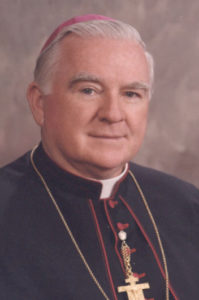
Burke served as vicar for urban affairs and diocesan director of the Society for the Propagation of the Faith, and assisted his host bishops in their pastoral responsibilities through parish visitations and administering confirmation until shortly before his death on May 24, 1994.
Robert E. Mulvee, Auxiliary Bishop of Manchester, New Hampshire, was appointed seventh Bishop of Wilmington to succeed Bishop Mardaga on February 19, 1985. He was installed in Wilmington on April 11, 1985, and began a diocesan administration emphasizing collegiality. He led a five-year planning process culminating in the report “A Church Called to Serve: Pastoral Directions for the ’90s.” Answering the call to ecumenism of the Vatican Council, he helped restructure the Delmarva Ecumenical Agency into the Christian Council of Delaware and Maryland’s Eastern Shore, as a more responsive vehicle for Christian interaction. As the Catholic population increased to 165,000, of a total 1,050,000 people in the area, he founded two new missions in the southern part of the diocese and raised a third to parish status. On February 7, 1995, he was appointed Coadjutor Bishop of Providence, R.I., and became the seventh Bishop of Providence on June 11, 1997.
New century, new goals
Bishop Michael A. Saltarelli of Newark, New Jersey, was appointed eighth Bishop of Wilmington on November 21, 1995, and was installed on January 23, 1996. Soon after his arrival, he announced seven priorities: to promote vocations; to develop a comprehensive pastoral ministry to Hispanic people; to assure efficient and effective diocesan departments and ministries; to establish new parishes and schools; to explore the roles of clergy and laity in various models of parish ministry; to evangelize the unchurched and alienated in the African American community; and to develop a comprehensive ministry on college campuses.
Successfully addressing his highest priority, during a period of declining religious vocations, Bishop Saltarelli ordained 24 new priests for the diocese and revitalized the permanent diaconate program, ordaining 48 permanent deacons to augment the 45 serving when he arrived.
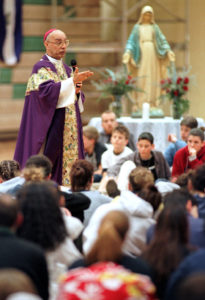
The diocese strengthened its ministry to the growing Hispanic population and established two new parishes— St. Margaret of Scotland, Glasgow, in 1998, and St Jude the Apostle, Lewes (previously a mission of St. Edmond, Rehoboth Beach,) in 2002 — and the new mission of Our Lady of Guadalupe, Frankford (Roxana), in the care of St. Ann, Bethany Beach in 2006.
In 2001, Bishop Saltarelli launched a five-year, $50-million campaign “Bringing the Vision to Life,” for capital funds to enable parishes and the diocese to meet other challenges of the 21st century. Among its early projects was the diocese’s first new elementary school in 40 years, Christ the Teacher, which opened at Glasgow in 2002, serving the children of four parishes in that area. A second interparochial elementary school, Most Blessed Sacrament, followed in 2003 in Ocean Pines, Maryland, serving children from seven parishes in that area.
Changing demographics and declining enrollments led to closing of four long-established parochial schools — Christ Our King, St. Hedwig, and St. Thomas in Wilmington, and Holy Spirit, New Castle. Two others — Holy Rosary, Claymont, and St. Helena, Bellefonte — were replaced in 2008 by a new interparochial school, named Pope John Paul II, serving both parishes at the Bellefonte location. By that year, 19 of the 58 parishes in the diocese operated their own elementary schools, while 13 other parishes were served by diocesan interparochial schools. The diocese also assumed responsibility for St. Thomas More Preparatory School, Magnolia, originally a private Catholic high school, which became the second diocesan secondary school. Other results of the capital campaign were new churches in areas of rapid new residential development, including St. Joseph, Middletown, SS. Peter and Paul, Easton, and St. Christopher, Kent Island.
When the scandal of clergy sex abuse came to light in 2002, the diocese faced it squarely, and after thorough investigation, acknowledged that over a period of 60 years there had been credible or confirmed allegations of child sex abuse against 18 Wilmington diocesan priests and three of other dioceses who had worked in this diocese, eleven of whom were still living but no longer in ministry. Bishop Saltarelli continued the policy of zero tolerance for offenders adopted by Bishop Mulvee in 1985, removing from ministry any priest against whom a credible complaint had been made, and extending concerned assistance to the survivors. To eliminate opportunities for future abuse, he established “For the Sake of God’s Children,” a continuing

program that assures a safe environment for children during all church-related activities, to include criminal background checks for all diocesan personnel, and parish employees and volunteers, clergy or lay, conducting children’s activities.
Bishop Saltarelli, having reached the mandatory retirement age, submitted his resignation, which was accepted on July 7, 2008, when Pope Benedict XVI appointed as his successor Bishop W. Francis Malooly, an auxiliary bishop of Baltimore. Bishop Malooly was installed as ninth Bishop of Wilmington, spiritual leader of 58 parishes and 233,000 people, on September 8, 2008.
After serving as bishop emeritus of the diocese for just over a year, Bishop Saltarelli died Oct. 8, 2009, after being treated for cancer and heart disease since his retirement.
New challenge, direction
In 2007 the Delaware General Assembly responded to the scandal of clergy sex abuse by suspending the state’s Statute of Limitations for such cases during a two-year period. Normally that statute required that legal actions for damages be brought within seven years of the damaging activity. By the time the window closed in 2009, over 150 civil actions for abuse from as far back as 50 years in the past were brought against individual former priests, the parishes where they worked, and the diocese for negligence in not preventing the harmful conduct. Jury verdicts for victims in the first cases that came to trial exceeded a million dollars for each victim. Faced with the possibility that verdicts in the cases tried earlier could exhaust the assets of the diocese and involved parishes before later cases came to trial, leaving nothing to compensate those victims, the diocese filed for bankruptcy in 2009, so that all those with a claim on diocesan assets could be compensated fairly in proportion to the injuries they suffered. The diocese emerged from bankruptcy in 2011, after reaching a settlement with abuse survivors that included non-monetary undertakings, as well as $77.4 million in damages, to be met from sale of diocesan assets, insurance coverage, staff reductions, and contributions from unrestricted funds of Catholic Cemeteries and the Catholic Diocese Foundation, uninvolved charitable corporations of the diocese.
Population and demographic changes continued to affect parish and school organization, with St. Stanislaus parish in Wilmington closing in 2009 when only a few of its Polish families remained. Christ Our King parish closed its doors in 2016. Pope John Paul II interparochial school in the north Wilmington suburbs closed in 2012 after only four years of operation.
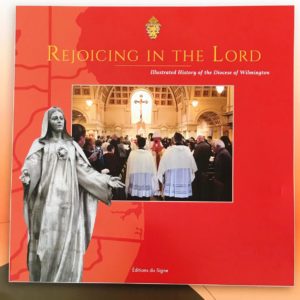
However, a diocesan-wide study in 2012 showed a high level of willingness to contribute to the ongoing capital needs of the church, and in 2013 the diocese undertook “Sustaining Hope for the Future,” a three-year campaign to raise $28 million in capital funds for the diocese and its 57 parishes.
In 2017, Bishop Malooly announced plans to celebrate the Diocese of Wilmington’s 150th anniversary. The year-long celebration, “Rejoicing in the Lord since 1868,” began with a Mass at the Cathedral of St. Peter on March 3, 2018, commemorating the establishment of the diocese in Delaware and the Eastern Shore of Maryland by Pope Pius IX in 1868.
The sesquicentennial includes pilgrimages, a Convocation and a commemorative book.
In April 2018, the bishop led a diocesan pilgrimage to Annecy, France, the home of St. Francis de Sales, the patron saint of the diocese, and to Rome.
“Every deanery, parish, church, and Catholic in Delaware and Maryland’s Eastern Shore will have an opportunity to participate in 150th anniversary activities,” Bishop Malooly said. “It will be a time of joyful thanks to God for our countless blessings and prayer for the future of the Diocese of Wilmington.”







